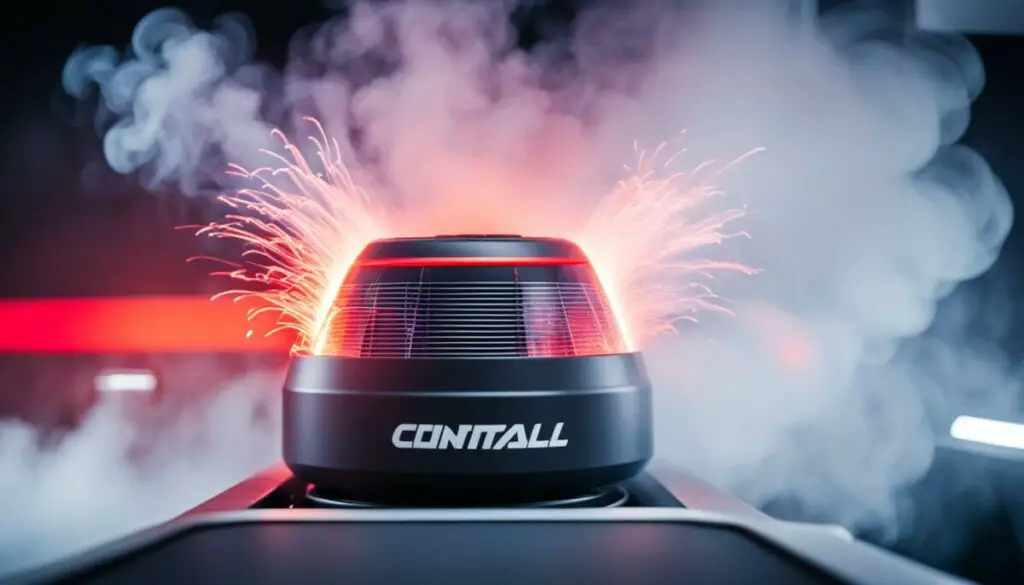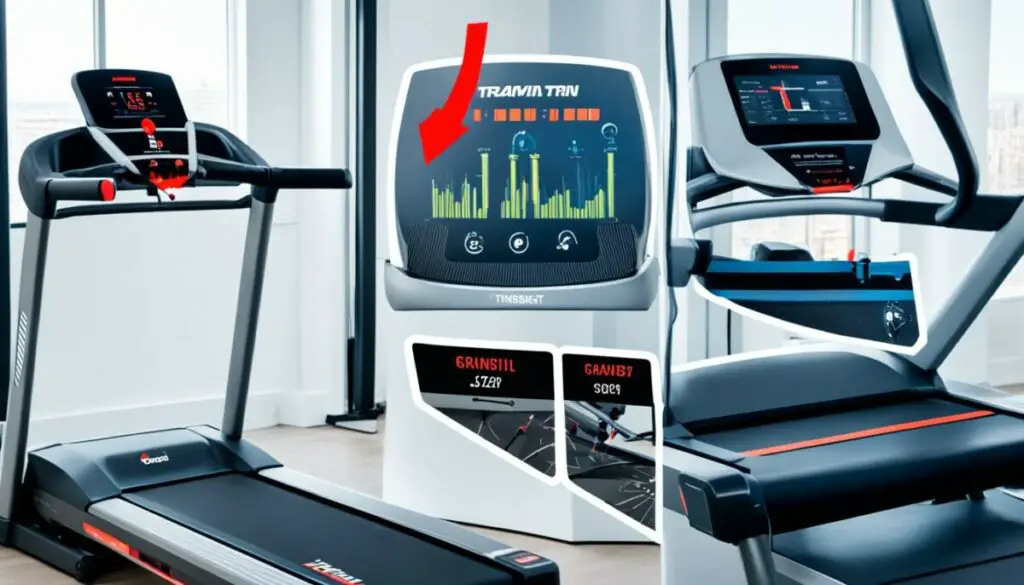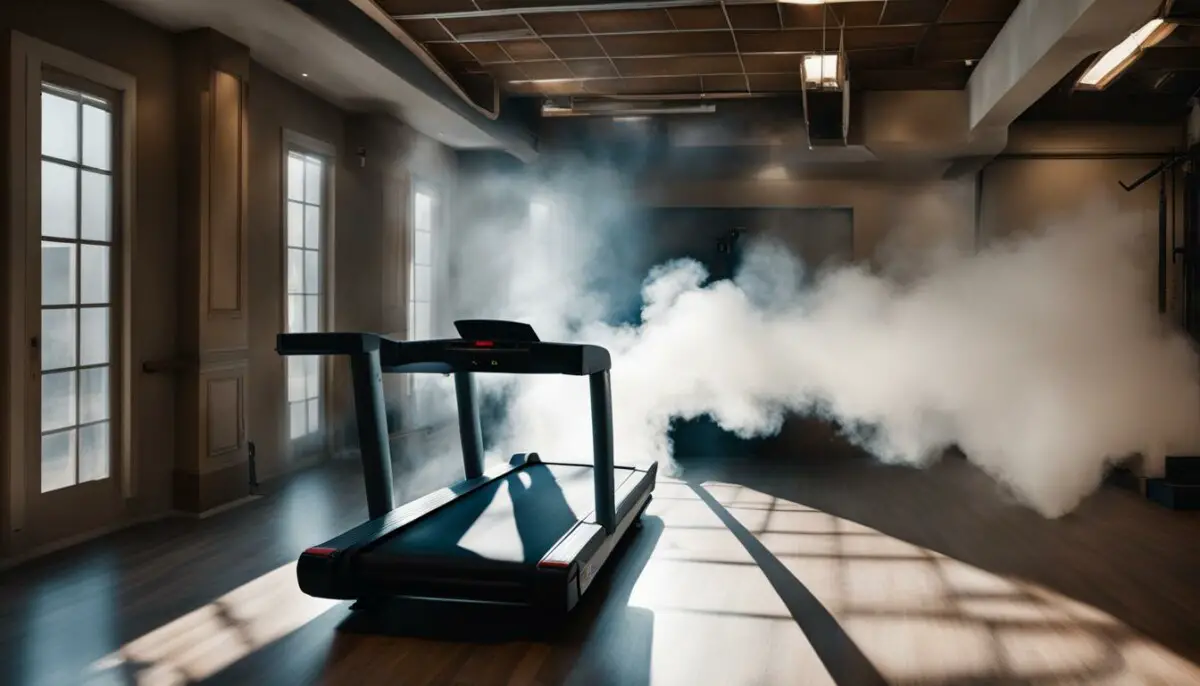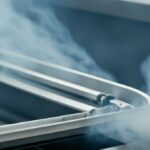Last Updated on 3 months by Francis
Treadmills are popular exercise machines that provide a convenient way to stay fit and active from the comfort of your home. However, one common issue that treadmill owners may encounter is motor overheating. This article will explore the causes of treadmill motor overheating, discuss the symptoms to watch out for, and provide effective solutions to prevent and address this problem.
Contents
Key Takeaways:
- Treadmill motor overheating is a common issue faced by treadmill owners.
- Causes of motor overheating include excessive usage, dust accumulation, insufficient lubrication, and voltage fluctuations.
- Symptoms of motor overheating include a burning odor, tripped circuit breakers, and sudden shutdowns.
- Preventing motor overheating involves proper maintenance, rest intervals, checking the power supply, ensuring ventilation, and seeking professional assistance if needed.
- Replacing a treadmill with an overheating motor depends on factors such as overall condition, age, warranty, and warranty services.
How Does a Treadmill Motor Work?

Treadmill motors play a vital role in the smooth operation of a treadmill. They are typically direct current (DC) motors designed to convert electrical energy into mechanical power to drive the movement of the treadmill belt. Let’s take a closer look at how these motors work.
The conversion of electrical energy into mechanical power begins with the motor controller. The motor controller is responsible for adjusting the voltage and current supplied to the motor, thereby controlling its speed and operation. This ensures that the motor operates efficiently and smoothly.
When the treadmill is turned on, electrical energy is supplied to the motor. The motor then uses this electrical energy to generate a rotating magnetic field. This rotating magnetic field interacts with the magnetic field of the motor’s armature, causing it to rotate.
As the armature rotates, it drives the treadmill belt, propelling the user forward or backward depending on their desired speed and direction. The mechanical power generated by the motor is converted into motion that allows the user to walk, jog, or run on the treadmill.
In summary, a treadmill motor utilizes electrical energy to create a rotating magnetic field, which in turn drives the motor’s armature and ultimately the movement of the treadmill belt. The motor controller ensures that the motor receives the appropriate voltage and current for optimal performance.
To give you a visual representation, here’s an image of a treadmill motor:
| Key Components of a Treadmill Motor | Description |
|---|---|
| Motor Controller | The component that regulates the voltage and current supplied to the motor, controlling its speed and operation. |
| Armature | The rotating part of the motor that interacts with the magnetic field to generate motion. |
| Treadmill Belt | The surface on which the user walks, jogs, or runs, driven by the rotation of the motor’s armature. |
Causes of Treadmill Motor Overheating
Treadmill motor overheating can result from several factors that affect its performance and increase the risk of excessive heat buildup. Understanding these causes is essential for effective troubleshooting and prevention.
1. Excessive Usage
The continuous and prolonged usage of a treadmill without adequate rest intervals can strain the motor, leading to excessive heat generation. Running or operating the treadmill at high speeds for extended periods without allowing it to cool down can put a heavy workload on the motor, causing it to overheat.
2. Dust Accumulation
Dust accumulation inside the motor compartment can restrict airflow, impede proper cooling, and contribute to motor overheating. Over time, dust particles can settle on the motor’s internal components, inhibiting the dissipation of heat and reducing its overall efficiency.
3. Insufficient Lubrication
Inadequate lubrication between the treadmill belt and deck can increase friction and resistance, placing additional strain on the motor. The lack of proper lubrication creates excessive heat, leading to motor overheating and potential damage to the treadmill’s components.
4. Voltage Fluctuations
Voltage fluctuations in the power supply can have a significant impact on treadmill motor performance and contribute to overheating. Unstable or fluctuating voltages can disrupt the motor’s electrical operation, leading to increased heat production and potential motor damage.
To effectively address and prevent treadmill motor overheating, it is crucial to address these causes. Regular maintenance, proper cleaning to prevent dust accumulation, adequate lubrication, and stable power supply are essential in maintaining optimal motor performance and avoiding overheating.
Symptoms of Treadmill Motor Overheating

There are several signs that indicate motor overheating. An overheated motor often emits a distinct burning odor. If the treadmill frequently trips the circuit breaker during operation, it suggests the motor is drawing excessive current. A sudden shutdown during use can also indicate motor overheating.
When a treadmill motor overheats, it can produce a noticeable burning odor. This smell is caused by the excessive heat generated within the motor. It is crucial to address this issue promptly to avoid further damage to the motor and ensure safe operation.
Another symptom of motor overheating is a tripped circuit breaker. If the treadmill consistently trips the circuit breaker during use, it indicates that the motor is drawing an excessive amount of current. This can happen due to increased friction or an internal fault in the motor.
A sudden shutdown during treadmill operation is another sign of motor overheating. When the motor becomes too hot, it may automatically shut down to protect itself from damage. This sudden shutdown can disrupt your workout and requires immediate attention to prevent further overheating.
Common Symptoms of Treadmill Motor Overheating:
- Burning odor
- Tripped circuit breaker
- Sudden shutdown
If you experience any of these symptoms, it is crucial to address the issue promptly to prevent further damage to your treadmill and ensure safe and reliable operation.
Solutions to Treadmill Motor Overheating

To prevent and address treadmill motor overheating, several solutions can be implemented. By following these recommendations, you can ensure the proper functioning and longevity of your treadmill motor.
Proper Maintenance
Regular maintenance plays a crucial role in preventing treadmill motor overheating. Clean the motor compartment regularly to remove dust and debris that can hinder proper airflow. Ensure that there is no accumulation of dirt or foreign objects near the motor. Additionally, lubricate the treadmill’s moving parts according to the manufacturer’s instructions to reduce friction and heat buildup.
Rest Intervals
Allowing rest intervals during treadmill usage is essential in preventing motor overheating. Continuous use without breaks can strain the motor and lead to excessive heat generation. To give the motor sufficient time to cool down, take short breaks during longer workout sessions.
Power Supply
Check the power supply to your treadmill for voltage fluctuations. Unstable voltage levels can impact the motor’s performance and contribute to overheating. Consider using a voltage stabilizer or surge protector to ensure a consistent power supply to your treadmill.
Ventilation
Proper ventilation is crucial for maintaining optimal motor temperatures. Place your treadmill in a well-ventilated area, away from walls or other objects that may obstruct airflow. Ensure that there is sufficient space around the motor for air to circulate freely, allowing heat to dissipate effectively.
Professional Consultation
If you have followed the above solutions and continue to experience motor overheating issues, it is advisable to seek professional consultation. A trained technician can identify underlying problems and provide expert guidance on resolving the issue effectively. They have the technical knowledge and experience to diagnose and repair treadmill motor problems accurately.
| Solutions | Description |
|---|---|
| Proper Maintenance | Regularly clean the motor compartment and ensure proper lubrication to reduce friction and heat buildup. |
| Rest Intervals | Allow the motor to cool down by taking short breaks during longer workout sessions. |
| Power Supply | Check for voltage fluctuations and consider using a voltage stabilizer or surge protector. |
| Ventilation | Ensure the treadmill is placed in a well-ventilated area, allowing air to circulate around the motor. |
| Professional Consultation | Seek expert advice from a trained technician if issues persist after implementing the above solutions. |
By following these recommended solutions, you can effectively prevent and address treadmill motor overheating, ensuring a longer lifespan for your treadmill and a smoother workout experience.
Should You Replace a Treadmill with an Overheating Motor?

When faced with a treadmill motor that overheats, it’s important to assess the overall condition of the machine before making a decision to repair or replace it. If the motor overheating is the only major issue and the rest of the treadmill is in good working order, opting for repair or replacement of the motor can be a more cost-effective solution. Evaluating the age and warranty status of the treadmill is also crucial in making an informed choice.
If your treadmill is still under warranty, it’s recommended to contact the manufacturer for repair services or guidance on resolving the overheating issue. Warranty services can provide peace of mind and save you from unnecessary expenses. If the warranty has expired, weighing the cost of repairs against the benefits of investing in a new treadmill is essential.
Consider the following factors when making your decision:
- The overall condition of the treadmill: Is the motor overheating the only significant problem?
- The age of the treadmill: Older treadmills may have more worn-out components, and repairing one issue may not prevent future issues from arising.
- The warranty status: If your treadmill is still within the warranty period, taking advantage of the warranty services is highly advisable.
Repairing or replacing a motor:
“If the motor overheating is the only major issue and the treadmill is in good condition otherwise, repairing or replacing the motor can be a more cost-effective solution. However, if the treadmill is older and other components are showing signs of wear, it may be advisable to consider investing in a new treadmill.”
Ultimately, the decision to repair or replace a treadmill with an overheating motor depends on various factors. Assessing the overall condition, considering the age and warranty of the treadmill, and weighing the cost of repairs against a new purchase are crucial steps in making an informed choice.
Understanding Treadmill Motor Heat
When using a treadmill, it’s important to understand that the motor will naturally generate heat during operation. However, excessive heat buildup can lead to performance issues and potential damage. To prevent this, it’s crucial to grasp the concept of normal operating temperature and ensure proper ventilation for the motor.
The normal operating temperature range of a treadmill motor typically falls between 100 to 140 degrees Fahrenheit (38 to 60 degrees Celsius). Staying within this range is crucial to maintain optimal performance and prevent overheating. Regularly check the user manual or consult the manufacturer to determine the specific normal operating temperature for your treadmill model.
One of the key factors in preventing excessive heat buildup is proper ventilation around the motor. The motor generates heat as it converts electrical energy into mechanical power, and without proper ventilation, this heat can accumulate and lead to overheating. Ensure that the treadmill is placed in a well-ventilated area, allowing air to circulate freely around the motor.
Proper airflow not only helps dissipate heat but also prevents the buildup of dust and debris, which can restrict ventilation and contribute to heat retention. Regularly clean the motor compartment to keep it free from any obstructions that could hinder proper airflow.
By understanding the normal operating temperature range of your treadmill motor and ensuring proper ventilation, you can effectively prevent excessive heat buildup. This will help maintain optimal performance and extend the lifespan of your treadmill motor.
Common Causes of a Hot Treadmill Motor
A hot treadmill motor can be attributed to various factors that affect its performance and generate excessive heat. Understanding these common causes can help you identify and resolve issues with your treadmill motor. Here are some of the key factors:
- Insufficient Lubrication: Inadequate lubrication between the treadmill belt and deck can lead to increased friction and heat generation within the motor. Regular lubrication is essential to reduce wear and tear, ensuring smooth operation and optimal motor performance.
- Belt Tension Problems: Improper belt tension can put additional strain on the treadmill motor. If the belt is too tight or loose, it can cause unnecessary friction, resulting in motor overheating. Regularly check and adjust the belt tension to maintain the appropriate level of tension.
- Motor Overload: Pushing the treadmill to its maximum capacity or frequently running at high speeds can overload the motor, causing it to overheat. Make sure to use the treadmill within its recommended limits to prevent excessive strain on the motor.
- Electrical Issues: Faulty electrical connections can disrupt the flow of power to the motor, affecting its performance and contributing to overheating. Regularly inspect and maintain the electrical connections to ensure proper functioning of the motor.
By addressing these common causes of a hot treadmill motor, you can ensure optimal performance, prevent overheating, and extend the lifespan of your treadmill.
Solutions to Prevent Treadmill Motor Overheating
Preventing treadmill motor overheating is crucial for maintaining optimal performance and extending the lifespan of your equipment. By following these essential maintenance tips, you can ensure efficient operation and prevent motor damage.
Regular Maintenance and Lubrication
Regular maintenance and lubrication are essential to keep your treadmill motor running smoothly. Follow the manufacturer’s guidelines for cleaning and lubricating the treadmill to prevent friction and excessive heat buildup. Clean the motor compartment regularly to remove any dust or debris that could obstruct airflow.
Proper Belt Tension Adjustment
Ensuring proper belt tension is crucial for optimal motor performance. A loose or tight belt can result in increased friction and strain on the motor, leading to overheating. Refer to the treadmill’s user manual or consult with a professional technician to adjust the belt tension correctly.
Weight Distribution
Proper weight distribution while using the treadmill is essential to prevent uneven stress on the motor. Distribute your weight evenly to avoid excessive strain on one side of the belt, which can contribute to motor overheating. Maintain an upright posture and avoid leaning or placing excess weight on the handles.
Electrical Connection Check
Regularly checking and maintaining the electrical connections of your treadmill is vital for efficient operation and safety. Ensure all connections are secure and free from dust or corrosion. Inspect the power cord for any signs of damage and replace it if necessary. If you notice any issues with the electrical connections, consult a professional technician for further assistance.
| Maintenance Tasks | Frequency |
|---|---|
| Cleaning the motor compartment | Every 1 to 2 weeks |
| Lubricating the belt | Every 3 to 6 months or as recommended by the manufacturer |
| Checking belt tension | Every 3 to 6 months or as recommended by the manufacturer |
| Inspecting electrical connections | Every 3 to 6 months or as needed |
By following these preventative measures, you can maintain a cool and efficiently running treadmill motor. Regular maintenance, proper belt tension adjustment, even weight distribution, and regular checks of the electrical connections will help ensure your treadmill operates optimally, preventing motor overheating and extending its lifespan.
Conclusion
Treadmill motor overheating can be a common problem, but with proper maintenance and following the provided prevention tips, you can address and prevent this issue. Regular cleaning, lubrication, and belt tension adjustment are essential for ensuring the optimal performance of the motor. Additionally, monitoring the electrical connections and distributing weight evenly on the treadmill can help prevent excessive strain on the motor.
If you experience persistent motor overheating despite these preventive measures, it is recommended to seek professional assistance. Professional technicians have the expertise to diagnose and address complex motor issues, ensuring the longevity of your treadmill and a trouble-free exercise experience.
By taking proactive measures and giving due attention to the maintenance of your treadmill motor, you can enjoy a reliable and efficient workout machine for years to come. Regular care, along with professional assistance when needed, will extend the lifespan of your treadmill motor and maximize its performance.
FAQ
What are the common causes of treadmill motor overheating?
Treadmill motor overheating can be caused by excessive usage without rest intervals, dust accumulation, insufficient lubrication, and voltage fluctuations in the power supply.
What are the symptoms of treadmill motor overheating?
Signs of treadmill motor overheating include a distinct burning odor, frequent tripping of the circuit breaker during operation, and sudden shutdown during use.
How can I prevent and address treadmill motor overheating?
To prevent motor overheating, practice proper maintenance, allow rest intervals during usage, check the power supply for voltage fluctuations, ensure proper ventilation, and consult a professional technician if problems persist.
Should I replace a treadmill with an overheating motor?
Before replacing the treadmill, consider the overall condition of the machine. If the motor overheating is the only major issue and the rest of the treadmill is in good working order, repairing or replacing the motor may be a more cost-effective solution.
What is the normal operating temperature for a treadmill motor?
Treadmill motors generate heat during operation, but proper ventilation helps maintain optimal operating temperatures. Understanding the normal operating temperature range is important to prevent excessive heat buildup.
What are the common causes of a hot treadmill motor?
A hot treadmill motor can be caused by insufficient lubrication, belt tension problems, motor overload, and electrical issues such as faulty connections.
How can I prevent treadmill motor overheating?
Preventing treadmill motor overheating involves regular maintenance and lubrication, proper belt tension adjustment, distributing weight evenly on the treadmill, and regularly checking and maintaining electrical connections.









